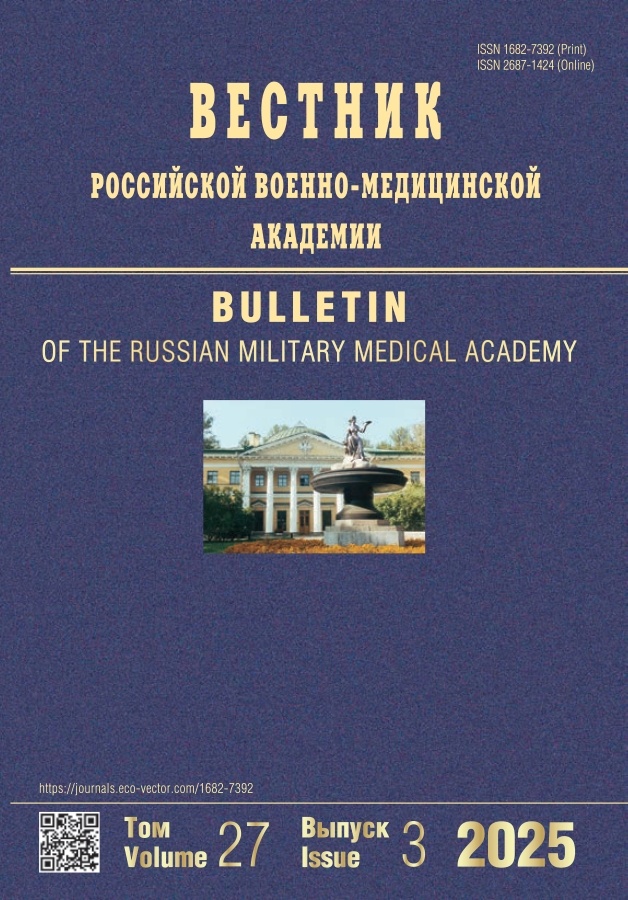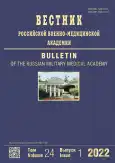Russian pharmacovigilance: ways to improve efficiency
- 作者: Taube A.A.1, Evko I.Y.2, Sinitova S.V.2, Krasheninnikov A.E.3, Zhuravleva M.V.1, Romanov B.K.4, Alyautdin R.N.1
-
隶属关系:
- Scientific Centre for Expert Evaluation of Medicinal Products
- Saint Petersburg University of Chemistry and Pharmacy
- National Pharmacovigilance Research Center
- Pirogov Russian National Research Medical University
- 期: 卷 24, 编号 1 (2022)
- 页面: 81-90
- 栏目: Original Study Article
- URL: https://journals.rcsi.science/1682-7392/article/view/89665
- DOI: https://doi.org/10.17816/brmma89665
- ID: 89665
如何引用文章
详细
The paper presents the results of a survey of pharmacovigilance specialists’ awareness of the regulation of reporting on adverse drug reactions, self-assessment of their competencies and readiness for distance learning, creation of a generalized portrait of a pharmacovigilance specialist to create mechanisms for improving pharmacovigilance activities, and continuing education of pharmacovigilance specialists. The results of the correlation analysis of the knowledge of pharmacovigilance specialists with their self-assessment of their position are reflected. Information-analytical and sociological (survey) methods and descriptive statistics were used. A questionnaire consisting of 31 items was developed for the survey. The first part of the questionnaire consisted of general questions, such as on education, work experience in the pharmaceutical field and pharmacovigilance, and position held. The second part focused on the structure of pharmacovigilance in the organization of holders of the registration certificate. The third part consisted of 17 items aimed at identifying the level of knowledge concerning the immediate daily activities in pharmacovigilance and knowledge of the legislative framework. The final element was a question about the attitude to distance learning. Specialists working in the field of pharmacovigilance at enterprises and persons authorized for pharmacovigilance objectively assessed their practical knowledge and skills in the field of drug safety. Moreover, 42 (72%) respondents believe that they do not need to update their knowledge on pharmacovigilance, whereas 51 (87%) people successfully passed the proposed survey on knowledge of current legislation. Employees of senior positions showed higher knowledge in the field of pharmacovigilance. Specialists and senior pharmacovigilance specialists need to increase their level of professional knowledge, and they are aware of the need for further training.
作者简介
Alexandra Taube
Scientific Centre for Expert Evaluation of Medicinal Products
Email: taubeaa@expmed.ru
ORCID iD: 0000-0001-5594-4859
SPIN 代码: 7634-4399
candidate of pharmaceutical sciences
俄罗斯联邦, MoscowIrina Evko
Saint Petersburg University of Chemistry and Pharmacy
Email: irina.Evko@pharminnotech.com
SPIN 代码: 9788-4091
俄罗斯联邦, Saint Petersburg
Svetlana Sinitova
Saint Petersburg University of Chemistry and Pharmacy
Email: Svetlana.Sinitova@pharminnotech.com
SPIN 代码: 9181-9011
俄罗斯联邦, Saint Petersburg
Anatoly Krasheninnikov
National Pharmacovigilance Research Center
Email: anatoly.krasheninnikov@drugsafety.ru
ORCID iD: 0000-0002-7791-6071
SPIN 代码: 8670-9991
俄罗斯联邦, Moscow
Marina Zhuravleva
Scientific Centre for Expert Evaluation of Medicinal Products
编辑信件的主要联系方式.
Email: zhuravleva@expmed.ru
ORCID iD: 0000-0002-9198-8661
SPIN 代码: 6267-9901
Scopus 作者 ID: 55878917900
俄罗斯联邦, Moscow
Boris Romanov
Pirogov Russian National Research Medical University
Email: bkr@yandex.ru
ORCID iD: 0000-0001-5429-9528
SPIN 代码: 8453-9166
俄罗斯联邦, Moscow
Renad Alyautdin
Scientific Centre for Expert Evaluation of Medicinal Products
Email: Alyautdin@expmed.ru
ORCID iD: 0000-0002-4647-977X
SPIN 代码: 1722-1817
Scopus 作者 ID: 6701792451
Researcher ID: L-9261-2014
doctor of medical sciences, professor
俄罗斯联邦, Moscow参考
- Pires C. A systematic review on learning outcomes of pharmacovigilance issues: Undergraduates of pharmacy. Int J Educ Res. 2021;109:101845. doi: 10.1016/j.ijer.2021.101845
- Ibrahim H, Abdo A, El Kerdawy AM, Eldin AS. Signal Detection in Pharmacovigilance: A Review of Informatics-driven Approaches for the Discovery of Drug-Drug Interaction Signals in Different Data Sources. Artificial Intelligence in the Life Sciences. 2021;1:100005. doi: 10.1016/j.ailsci.2021.100005
- Vilar S, Friedman C, Hripcsak G. Detection of drug-drug interactions through data mining studies using clinical sources, scientific literature and social media. Brief Bioinform. 2018;19(5): 863–877. doi: 10.1093/bib/bbx010
- Lee CY, Phoebe Chen Y-P. Prediction of drug adverse events using deep learning in pharmaceutical discovery. Brief Bioinform. 2021;22(2):1884–1901. doi: 10.1093/bib/bbaa040
- Ward IR, Wang L, Lu J, et al. Explainable artificial intelligence for pharmacovigilance: What features are important when predicting adverse outcomes? Comput Methods Programs Biomed. 2021;212:106415. doi: 10.1016/j.cmpb.2021.106415
- Norén GN, Meldau E-L, Chandler RE. Consensus clustering for case series identification and adverse event profiles in pharmacovigilance. Artificial Intelligence in Medicine. 2021;122:102199. doi: 10.1016/j.artmed.2021.102199
- Tissot M, Valnet-Rabier M-B, Stalder T, et al. Epidemiology and economic burden of “serious” adverse drug reactions: Real-world evidence research based on pharmacovigilance data. Therapies. 2022. [In Press]. doi: 10.1016/j.therap.2021.12.007
- Peyvandi F, Garagiola I, Mannuccio-Mannucci P. Post-authorization pharmacovigilance for hemophilia in Europe and the USA: Independence and transparency are keys. Blood Rev. 2021;49:100828. doi: 10.1016/j.blre.2021.100828
- Tyagi S. Global research output in ‘pharmacovigilance’ during 2010–2020. Therapies. 2021. [In Press]. doi: 10.1016/j.therap.2021.11.011
- Mouffak A, Lepelley M, Revol B, et al. High prevalence of spin was found in pharmacovigilance studies using disproportionality analyses to detect safety signals: a meta-epidemiological study. J Clin Epidemiol. 2021;138:73–79. doi: 10.1016/j.jclinepi.2021.06.022
- Glagolev SV, Gorelov KV, Chizhova DA. Russian pharmacovigilance in a newly regulated environment: two-year results and prospects. Remedium. 2019;(3):6–14. (In Russ.). doi: 10.21518/1561-5936-2019-3-8-14
- Reumerman M, Tichelaar J, Piersma B, et al. Urgent need to modernize pharmacovigilance education in healthcare curricula: review of the literature. Eur J Clin Pharmacol. 2018;74(10): 1235–1248. doi: 10.1007/s00228-018-2500-y
- Zhuravleva MV, Romanov BK, Gorodetskaya GI, et al. Topical Issues of Drug Safety, Possibilities of Improving of Pharmacovigilance. Safety and Risk of Pharmacotherapy. 2019;7(3):109–119. (In Russ.).. doi: 10.30895/2312-7821-2019-7-3-109-119
- Hartman J, Härmark L, van Puijenbroek E. A global view of undergraduate education in pharmacovigilance. Eur J Clin Pharmacol. 2017;73(7):891–899. doi: 10.1007/s00228-017-2237-z
- Matveev AV, Krasheninnikov AE, Matveeva EA, Romanov BK. Differences between the European and Eurasian Good Pharmacovigilance Practices. Safety and Risk of Pharmacotherapy. 2021;9(2):75–84. (In Russ.). doi: 10.30895/2312-7821-2021-9-2-75-84
补充文件








